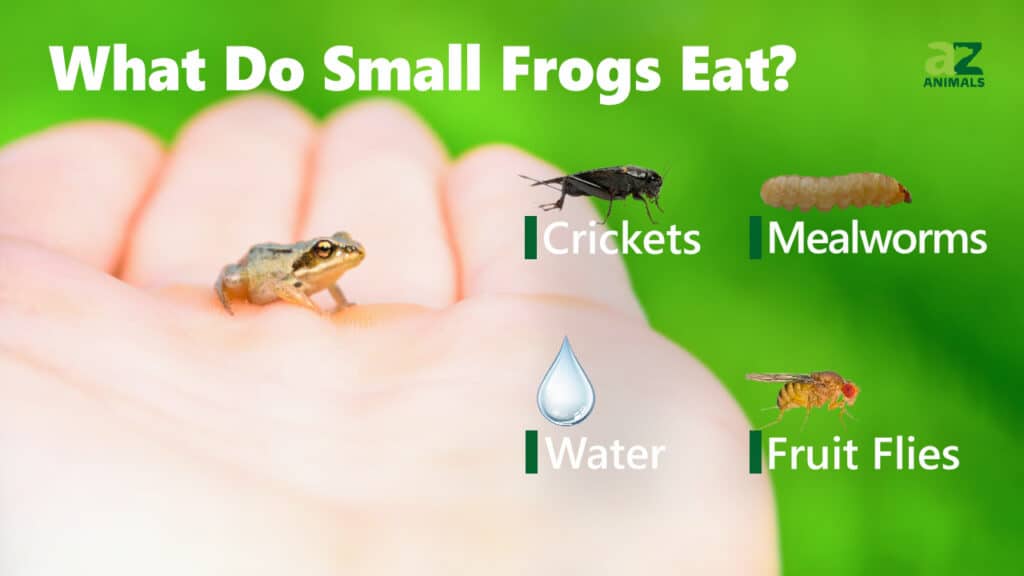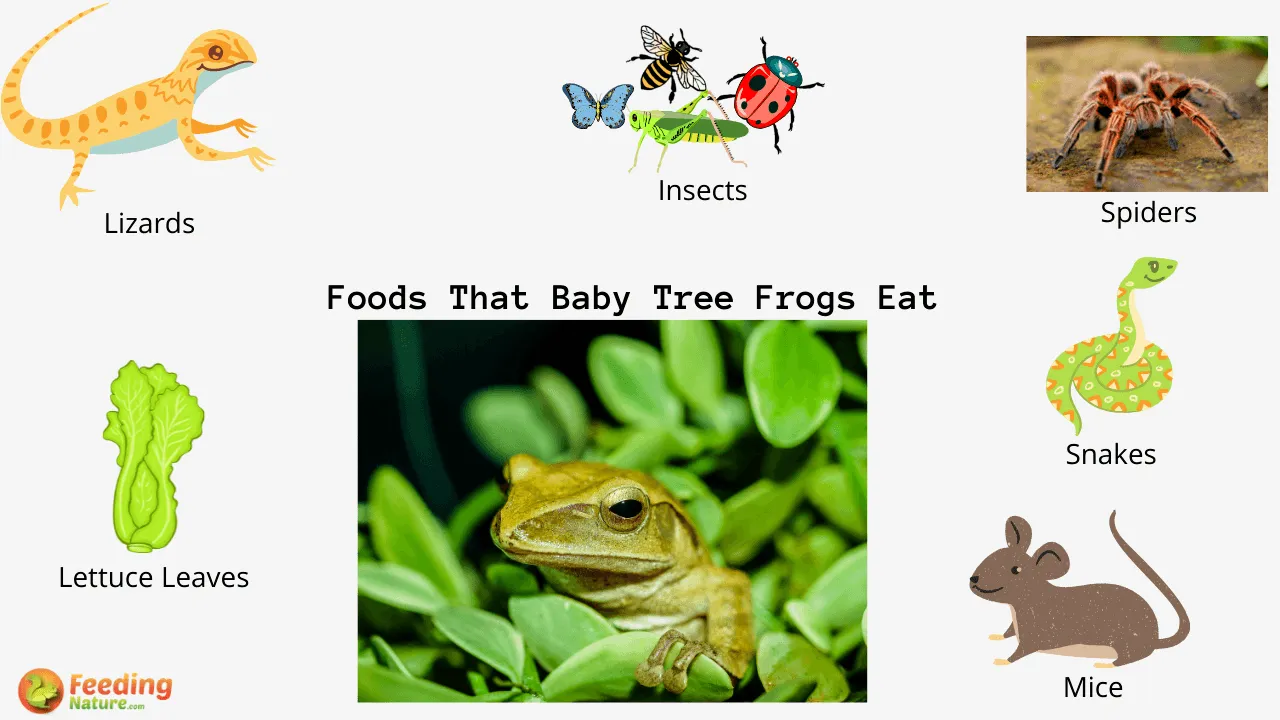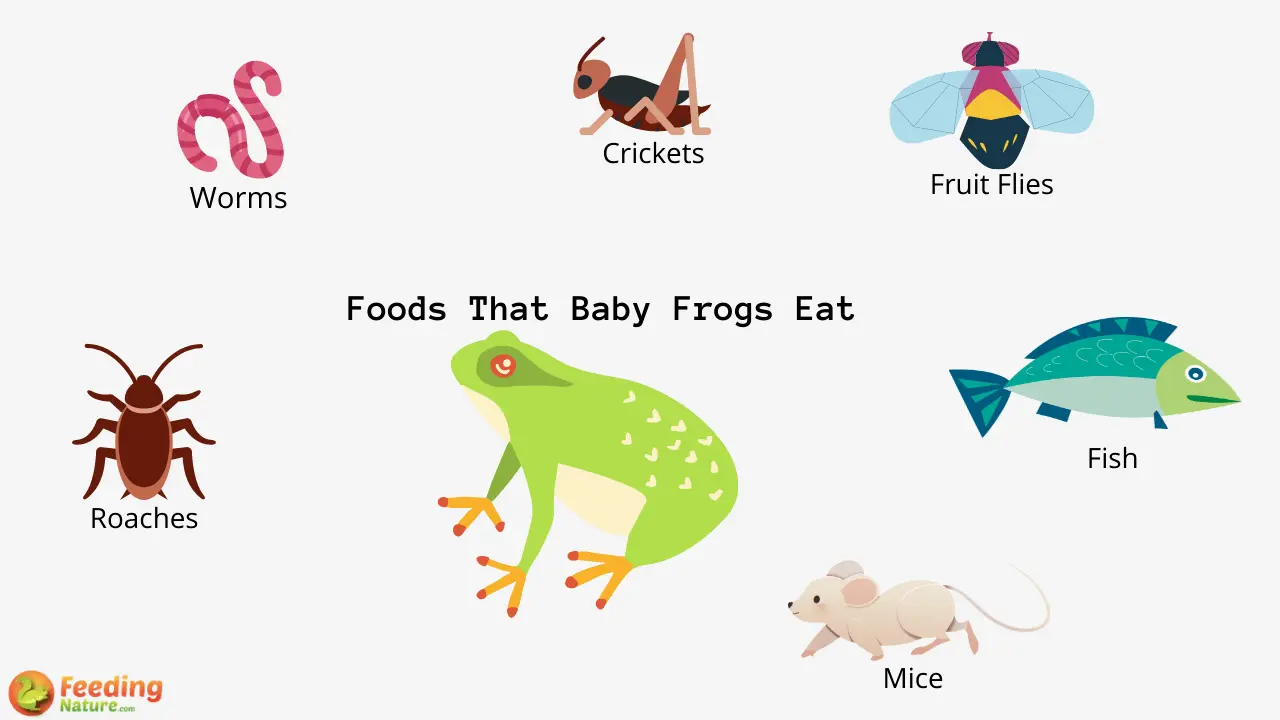What Do Baby Frogs Eat? The Surprising Truth
Baby frogs, often called tadpoles, are fascinating creatures that undergo a dramatic transformation from aquatic larvae to terrestrial amphibians. But what fuels this incredible metamorphosis? Understanding the diet of baby frogs is key to appreciating their role in the ecosystem and ensuring their survival. This article dives into the specifics of what baby frogs eat, revealing some surprising truths along the way.
The Diet of Tadpoles: A Watery World of Food
The diet of a baby frog, in its tadpole stage, is significantly different from what it will consume as a fully-grown adult. Their feeding habits are directly tied to their aquatic environment and developmental stage.
Early Stage Tadpoles: The Vegetarian Phase
Newly hatched tadpoles primarily feed on:
- Algae: Microscopic algae are a staple food source, scraped from surfaces like rocks and plants.
- Detritus: Decaying organic matter, such as dead leaves and plant debris, provides essential nutrients.
- Bacteria: Tiny bacteria that thrive in the aquatic environment are also consumed.
This initial diet is crucial for providing the energy needed for growth and development, as well as the formation of their first limbs and the development of lungs.
Mid-Stage Tadpoles: Expanding the Menu
As tadpoles grow larger and develop, their dietary needs evolve. They begin to explore a wider range of food sources, including:
- Soft Plant Matter: They’ll start to nibble on softer aquatic plants.
- Small Invertebrates (Occasional): In some instances, they may consume very small aquatic invertebrates, such as tiny crustaceans.
- Commercial Tadpole Food (in captivity): If raised in captivity, tadpoles can be fed specialized commercial food formulated to meet their nutritional needs.
Late-Stage Tadpoles: Transitioning to Omnivory
As tadpoles approach metamorphosis, their diet becomes more diverse, and they begin to eat more protein. This is a crucial period, where the diet becomes more omnivorous, including:
- Small Insects: If available, tadpoles may start consuming small insects that fall into the water.
- Other Tadpoles (Rare): In crowded environments or when food is scarce, tadpoles may occasionally cannibalize smaller or weaker individuals.
The Froglet Diet: From Water to Land and a New Menu
Once the tadpole transforms into a froglet, a miniature version of an adult frog, its diet shifts dramatically.
Froglet Food Sources
Froglets transition to a carnivorous diet, similar to adult frogs. This primarily consists of:
- Small Insects: Ants, flies, gnats, and other small insects become their primary food source.
- Arachnids: Spiders and mites are also consumed.
- Aquatic Invertebrates (Near Water): Froglets that stay near water may continue to eat aquatic invertebrates.
The froglet’s hunting strategy typically involves ambushing prey and using their sticky tongues to capture it.
The Importance of Diet for Frog Health and the Ecosystem
The diet of baby frogs is directly linked to their survival and plays a vital role in the health of the ecosystem.
- Energy for Metamorphosis: A proper diet provides the energy and nutrients needed for the complex process of metamorphosis.
- Nutritional Balance: A balanced diet ensures healthy growth and development, making them less susceptible to diseases.
- Ecosystem Role: Baby frogs are a food source for various predators, including birds, fish, and snakes. They also play a role in controlling algae and insect populations.
Conclusion: A Dynamic Diet for a Dynamic Life
From algae-grazing tadpoles to insect-hunting froglets, the diet of baby frogs is a dynamic reflection of their life cycle. Understanding their dietary needs is crucial for both conservation efforts and responsible pet ownership. By providing the appropriate food sources at each stage, we can help ensure the survival of these fascinating creatures and the health of the ecosystems they inhabit.
Frequently Asked Questions (FAQs)
Can I feed bread to tadpoles? No, bread is not a suitable food source for tadpoles. It lacks the necessary nutrients and can pollute the water, leading to health problems.
What should I feed tadpoles in captivity? In captivity, you can feed tadpoles specialized commercial tadpole food, algae tablets, or boiled lettuce.
How often should I feed baby frogs in captivity? Feed froglets small amounts of insects daily, such as fruit flies or pinhead crickets. Make sure the insects are appropriately sized for the froglet.
Do baby frogs eat mosquito larvae? Yes, baby frogs (particularly tadpoles) can eat mosquito larvae, which is beneficial for controlling mosquito populations.
What happens if a tadpole doesn’t get enough food? A tadpole that doesn’t get enough food will grow slowly, potentially experience developmental problems, and may have a lower chance of surviving to metamorphosis.




